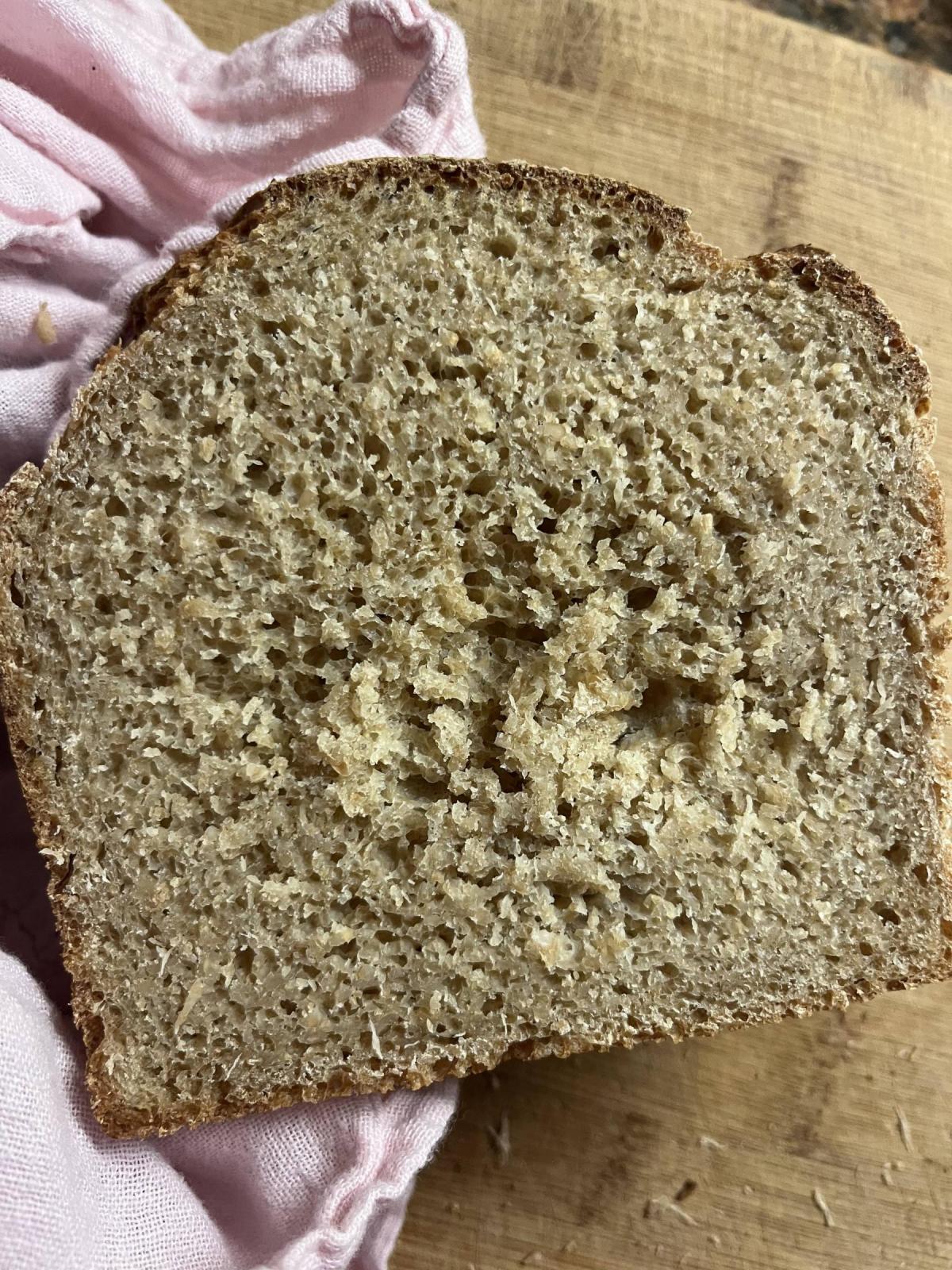August 24, 2023 - 3:54am

Gummy 50% whole grain bread pan loaf (with weird gap in middle)
Hi folks, what would cause my bread to look like this? This is a half-whole grain loaf; the grain is somewhat coarsely ground (by me), with the recipe 400g APF, 400g WG, about 600g water, 2.5tsp salt, 150g starter. Bulk ferment for five hours with several S&Fs, shape and into pan, rise overnight in fridge, preheat oven to 500º, throw bread in and knock temp down to 415º, bake for 45 minutes. This loaf sat for a full day before I cut into it. It came out overly dense, gummy, and with that weird hole in the middle.
I'm thinking it has to do with the shaping of the loaf more than anything but maybe that's wrong. Thanks!



I don't know the answer for sure but I notice two things.
1. That seems like too little water for that much whole grain. It might be useful to soak the whole grain flour for some time so that you can better adjust the overall hydration.
2. Gummy interiors sometimes are sometimes caused by too low a crumb temperature. Next time, plan to measure it if you can, even if you need to get a probe-type thermometer to do so. I'd aim for 208 - 210 deg F (98 - 99C).
TomP
Great advice. I'll up the hydro. Actually I normally DO check with my Thermapen but this time I didn't. Perhaps I missed the mark. I'll check next time. Thanks!
75% Water is, if anything on the high side.
Bit late now, but tasting the gummy middle, if it tastes raw that is the problem.
The crumb looks rather dense. You could try it without using the retardation / fridge. It might me your fridge is too cool to allow sufficient fermentation.
I would hydrate such a dough at 70%, though if both flours were on the weak side regarding glutenin I might go as low as 65%.
When retarding dough I always give it 20 min in a warm place before putting it into the fridge. Theoretically yeast is fermenting 40 times slower at 39F than it is at 79F.
If you include the flour and water in the starter, it is about 77% hydration. That would be a high hydration for an all-purpose flour bread, and would be sticky and hard to handle. But that in itself wouldn't make for a gummy bread, if baked fully.
Whole grain flour tends to soak up more water, which is why I suggested that the hydration wasn't that high. WG breads may also come out gummy, but again, that suggests insufficient baking. I didn't think to mention it in my earlier comment, but to get a more complete bake for the crumb, it would probably be better to bake at a lower temperature for a longer time to avoid over-cooking the crust.
However, the nature of the particular WG and how it's been aged (if at all) could play a part, too.
TomP
A dense bread needs to be cooked very long and slow. That is why it was gummy. The inside was not baked fully.
The main reason I'm replying is regarding wholegrain breads need higher hydration. It is a myth.
The idea that wholegrain flours needed more water dates back to the days when people were using hydration levels 0f 55% and 60% when, yes, more bran would need more water. Somehow the idea lingered on. Bran absorbs about 70% water when fully soaked. This is easy to check at home with a simple hydration test and weighing it before and after. I have done this.
With a hydration of around 70% no changes are required to the hydration level.
The component in flour which affects hydration most is the protein level. Protein is highly water absorbent. Higher protein, more hydration is required.
The hydration was too high and I suspect the retardation didn't allow sufficient proofing.
FWIW I mainly bake with wholegrain flours and have done so for more years than I wish to share ;)
https://www.thefreshloaf.com/node/66384/very-simple-sourdough-recipe
It is 60:40 ww:bread flour.